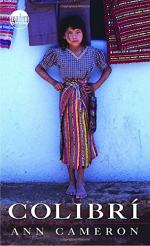|
This section contains 614 words (approx. 2 pages at 400 words per page) |

|
Espada's poem attempts to capture the fear and oppression felt by the Borinquens since the unwelcome arrival of outsiders. About fifty thousand Indians inhabited the island of Boriquen (which means "the great land of the valiant and noble Lord") when Christopher Columbus landed there in 1493. A peaceful people, the Taino were primarily farmers and fishermen living in a well-organized communal society. Columbus named the island "San Juan Bautista," for St. John the Baptist, and the town in which they landed "Puerto Rico" (rich port) because of its wealth of natural resources. The names were later switched when the King of Spain gave Columbus's lieutenant Juan Ponce de Leon a charter to settle the island in 1508. Spanish Conquistadors battled the native Indians, and those not killed were enslaved.
Continuing atrocities by the Spaniards and a smallpox epidemic almost wiped out the entire Taino population in...
|
This section contains 614 words (approx. 2 pages at 400 words per page) |

|




